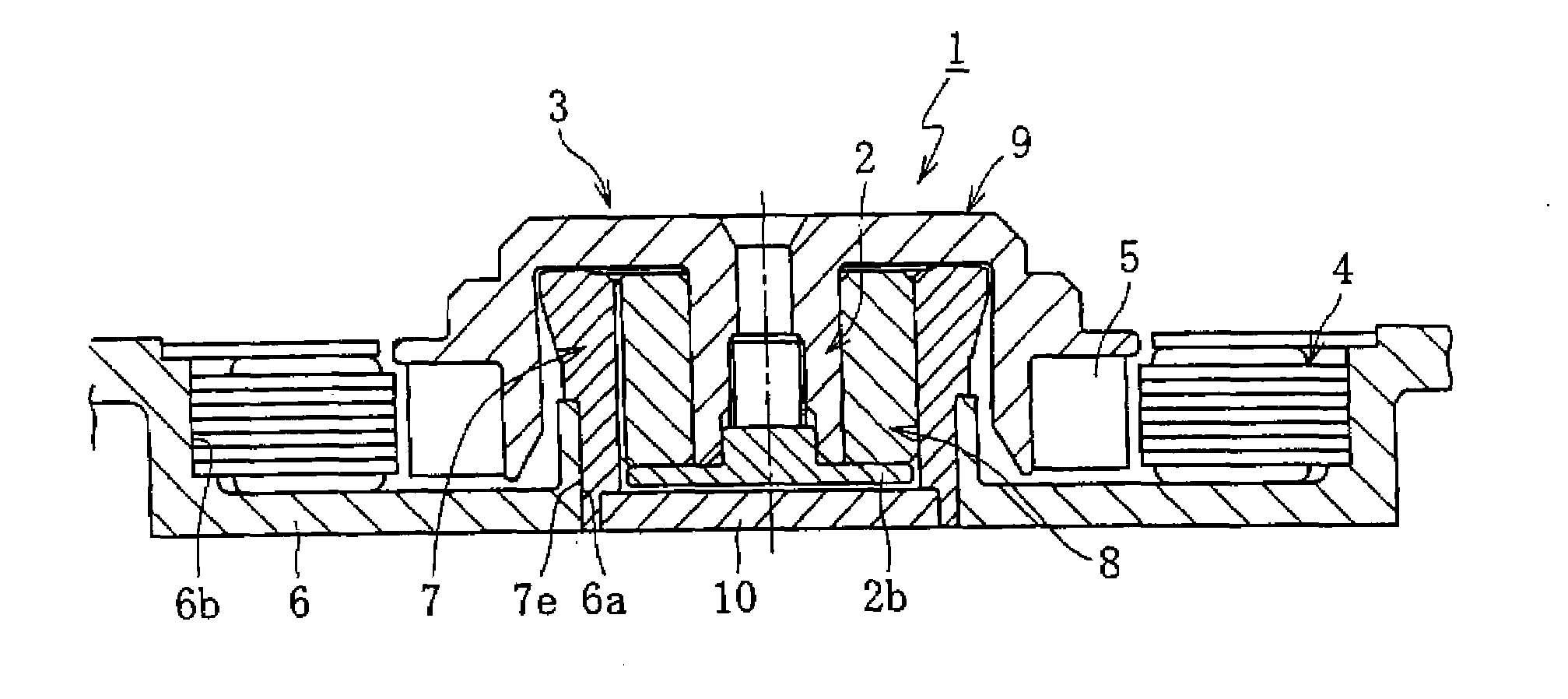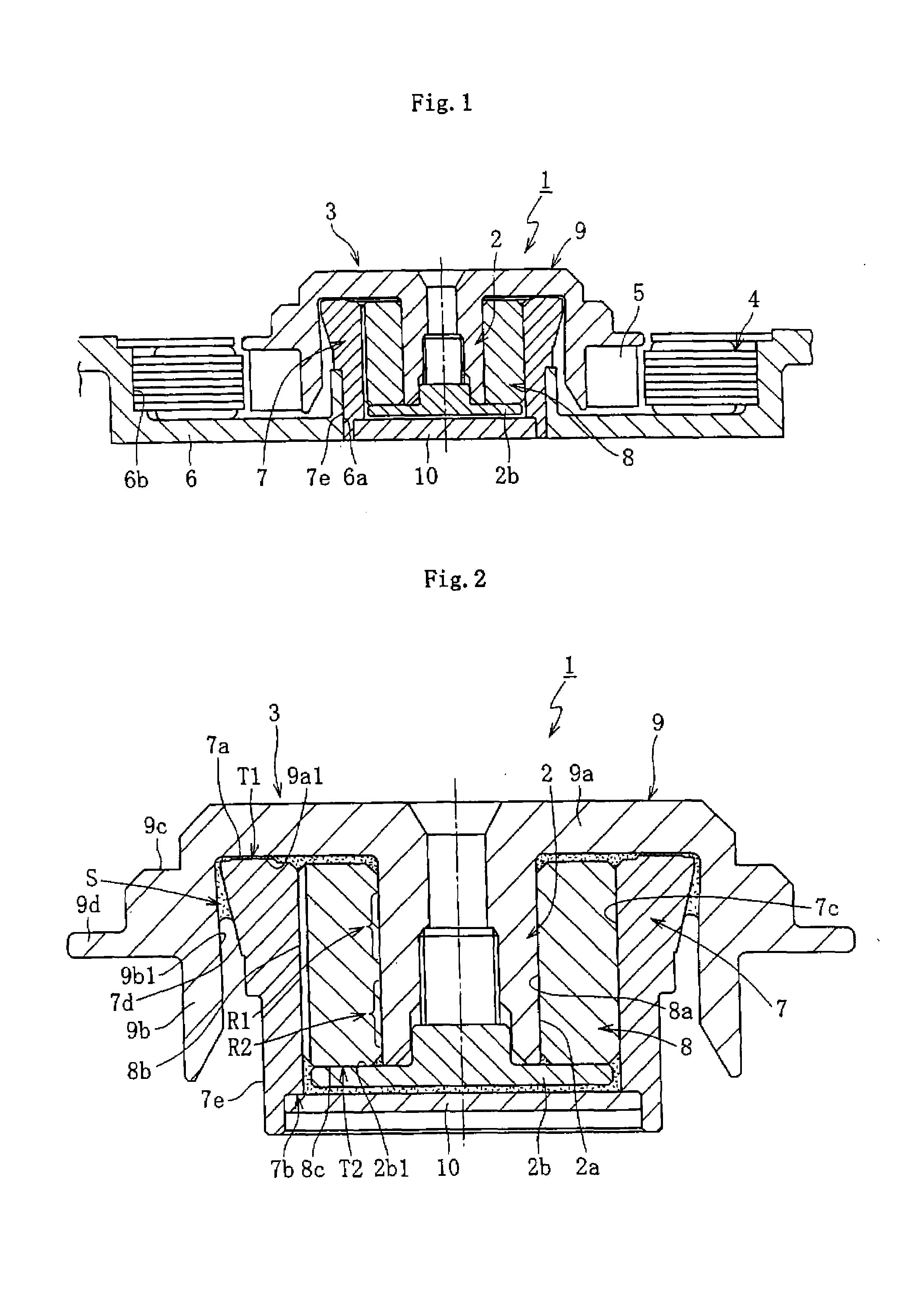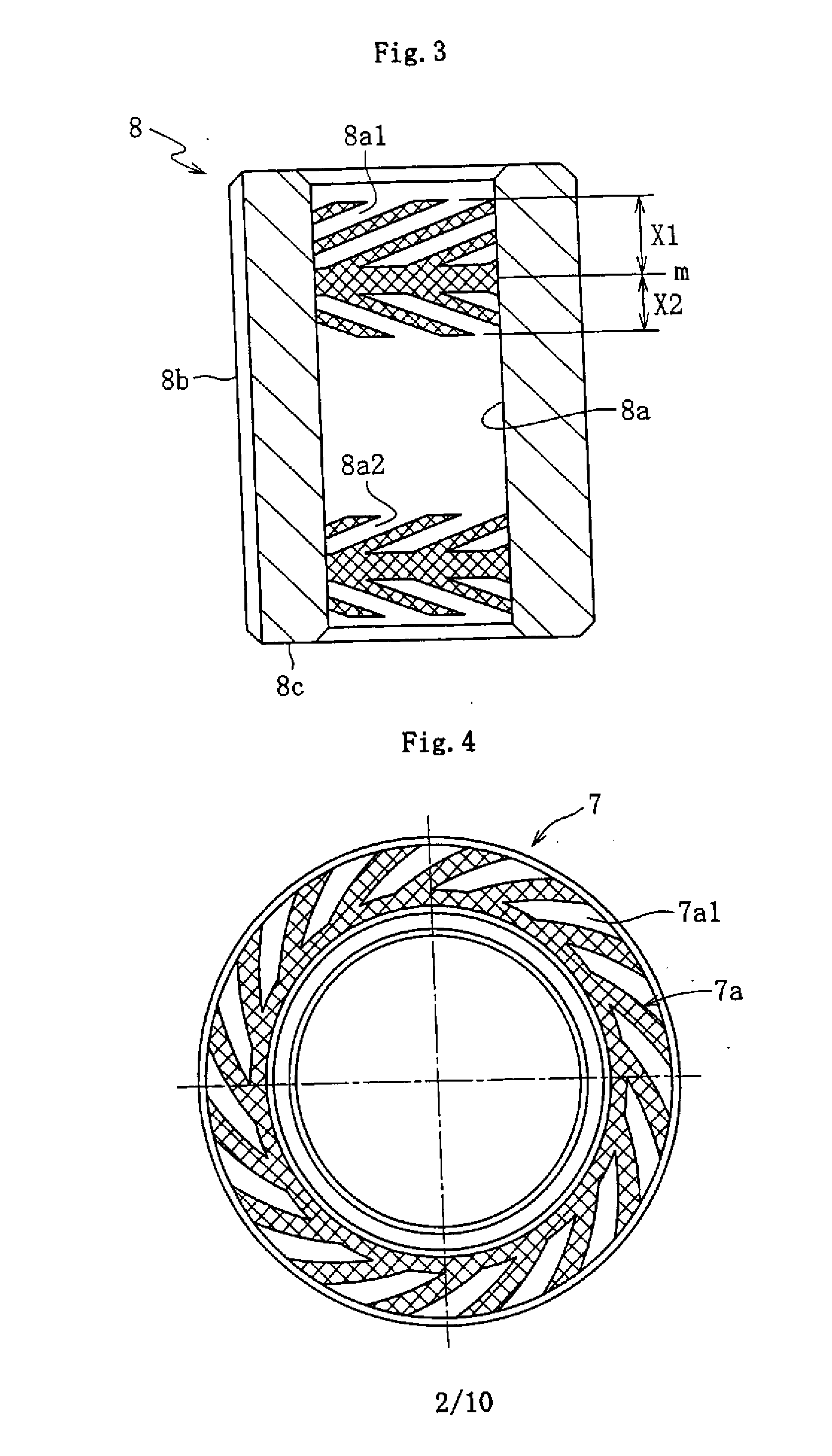Housing for fluid lubrication bearing apparatuses
a technology for fluid lubrication bearings and housings, which is applied in the direction of mechanical equipment, sliding contact bearings, rigid support of bearing units, etc., can solve the problems of reducing affecting the moldability of the housing, and lowering the viscosity of the whole resin, so as to ensure the cleanliness of the inner bearing or the surroundings of the bearing apparatus, avoid modification, deterioration and lowering of the viscosity of the lub
- Summary
- Abstract
- Description
- Claims
- Application Information
AI Technical Summary
Benefits of technology
Problems solved by technology
Method used
Image
Examples
example 1
[0103]To clarify the advantages of the present invention, a plurality of resin compositions having different chemical compositions were evaluated for the required characteristics of a housing for fluid lubrication bearing apparatuses. A certain polyphenylene sulfide (PPS) was used as a base resin. Moreover, a carbon fiber and six inorganic compounds having different main constituent elements or different shapes were used as fillers. The combination of these base resins and fillers (carbon fibers and inorganic compounds) and their compounding ratios are as shown in FIGS. 7 and 8.
[0104]It should be noted that in this Example, the following substances were used: LC-5G manufactured by Dainippon Ink And Chemicals, Incorporated as the linear polyphenylene sulfide (PPS) (The amount of Na contained: about 300 ppm), titanium oxide manufactured by Ishihara Sangyo Kaisha, Ltd. (grade: CR-60-2, main constituents: titanium oxide, average diameter: 0.2 μm), zinc oxide manufactured by The Honjyo C...
example 2
[0131]Moreover, to clarify the advantages of the present invention, a plurality of resin compositions with different chemical compositions were evaluated for the characteristics required for the housing 7. A linear polyphenylene sulfide (PPS) was used as the base resin. Moreover, four or five epoxy compounds having different epoxy values were each used as an epoxy compound added to the base resin. Moreover, a carbon fiber was used as the filler. The combinations and compounding ratios of these base resins and epoxy compounds are as shown in FIGS. 11 to 13.
[0132]It should be noted that in this Example, the followings were used: LC-5G manufactured by Dainippon Ink And Chemicals, Incorporated as the linear polyphenylene sulfide (PPS); and Bond-Fast manufactured by Sumitomo Chemical Co., Ltd. (grade: 2C, epoxy value: 0.42 meq / g), Rezeda manufactured by Toagosei Co., Ltd. (grade: GP301, epoxy value: 0.57 meq / g), Bond-Fast manufactured by Sumitomo Chemical Co., Ltd. (grade: E, epoxy value...
PUM
| Property | Measurement | Unit |
|---|---|---|
| tensile strength | aaaaa | aaaaa |
| aspect ratio | aaaaa | aaaaa |
| vol % | aaaaa | aaaaa |
Abstract
Description
Claims
Application Information
 Login to View More
Login to View More - R&D
- Intellectual Property
- Life Sciences
- Materials
- Tech Scout
- Unparalleled Data Quality
- Higher Quality Content
- 60% Fewer Hallucinations
Browse by: Latest US Patents, China's latest patents, Technical Efficacy Thesaurus, Application Domain, Technology Topic, Popular Technical Reports.
© 2025 PatSnap. All rights reserved.Legal|Privacy policy|Modern Slavery Act Transparency Statement|Sitemap|About US| Contact US: help@patsnap.com



